scale bar = 1cm.
Yellow Box - native (Eucalyptus melliodora)
Home....
Menu....
Common name index....
Scientific name index....
Glossary....
Other eucalypts....
Juvenile leaves....
Yellow Box bark
Yellow Box is a widespread species. It is sometimes found as a forest tree, but is more common on deeper and more fertile soils. There is much variation in appearance. The adult leaves are smaller than the leaves of other box eucalypts.
Distinguishing features include
- the habitat e.g. it is often on deeper and better soil
- the rough-barked trunk with smooth branches
- the small leaves, buds and fruit
- the stalked small oval juvenile leaves.
Isolated Yellow Box often have festoons of mistletoe - a sign of a degraded environment, and a loss of herbivores. In a healthy system, there will be natural check on mistletoe abundance.
There is much variation in the bark. The bark on the trunk may be hard and scaly, or dark and shaggy, or pale and finely-fibrous.
Yellow Box bark.
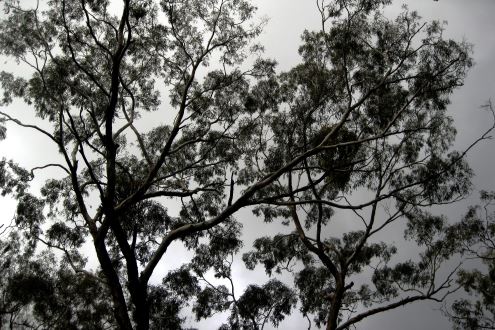
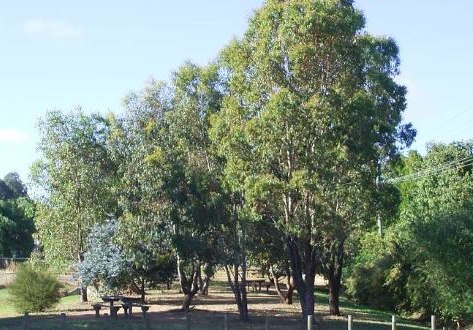
1: Yellow Box leaves are smaller than other Eucalypts of the heathy dry forests. Muckleford. 2: Yellow Box. Urquhart Street, planted to celebrate the Castlemaine Field Naturalists Club 21st birthday.
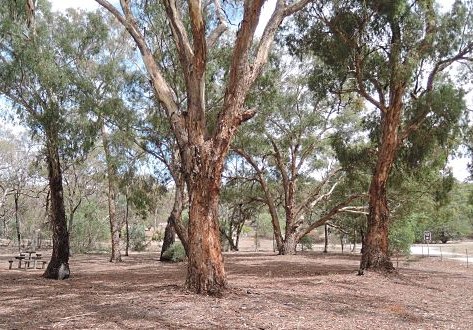
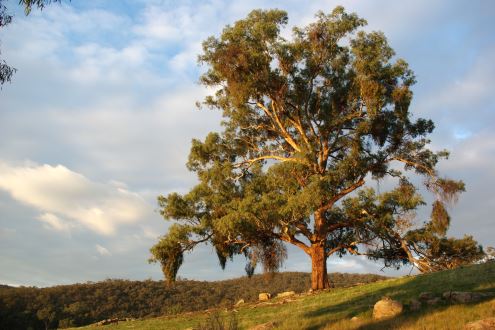
3: Yellow Box at the entrance to the North British Mine, Maldon. 4: Yellow Box in the evening. Glenluce.
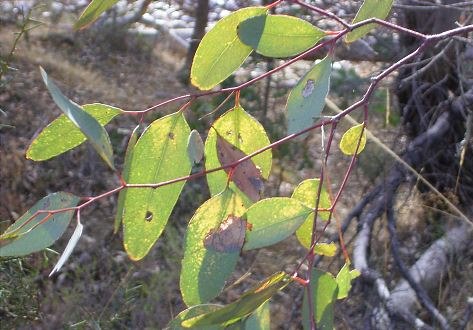
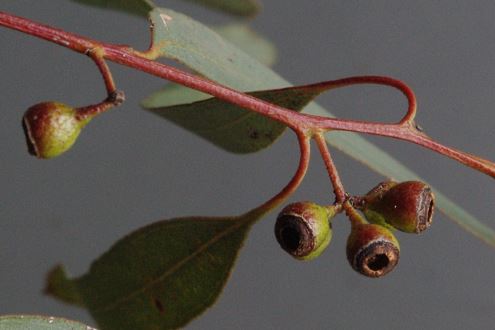
5: Juvenile leaves are small and oval. 6: The fruit are also small.
Yellow Box bark.


3: Yellow Box at the entrance to the North British Mine, Maldon. 4: Yellow Box in the evening. Glenluce.


5: Juvenile leaves are small and oval. 6: The fruit are also small.
Yellow Box bark.